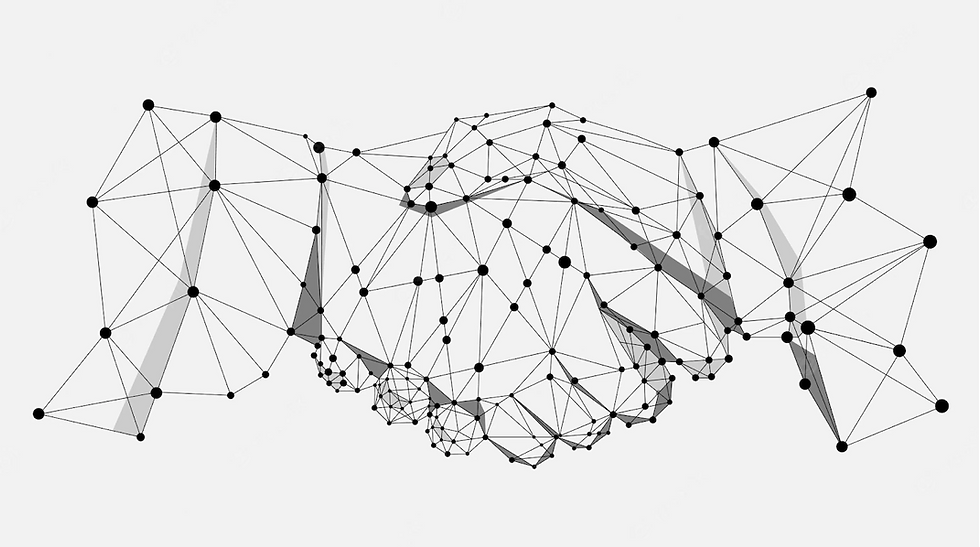What could go...right?
- Helene Peters

- Oct 20, 2022
- 3 min read
Updated: Jun 3, 2023
Learn how we took the best parts from the risk management process and complemented it with a few psychological insights and a strategic mindset, turning the exercise of identifying and evaluating risks into an effective method for identifying relevant impact factors and defining priorities.
How do you identify risks and opportunities? What do they have in common? What makes them relevant?
The Risk Management Process in a nutshell
Without diving too deep into the concepts, we would rather refer to institutions such as the #IRM or #ISO 31000 for official standard definitions and practices, we would like to build on the idea that risk management is all about identifying and evaluating risks (and opportunities), in a systematic way.
If you are facing changes ahead, are in the middle of a transition, or are in general operating in a dynamic environment, putting effort into preparation can be key to stay on top of the waves of change. All these scenarios, and this is not an exclusive list, have one thing in common: (increased perceived) uncertainty*.
This leads us to the commonly accepted definition of risk which we also have embraced throughout the years: the effect of uncertainty upon the achievement of objectives. It is possible to argue that risk management could rather be coined as uncertainty management...
In this blog we would like to emphasise that there is an established process, from clarification of the context, to identification, analysis and evaluation, to treatment and monitoring, that helps preparing and dealing with uncertainty. The systematic approach is particularly interesting when you are operating in complex and less routinised environments and are required to accumulate insights from a broader perspective. In classic Risk Management, the cross functional identification and assessment of potential risks (and opportunities) is also referred to as Enterprise Risk Management or #ERM.
As below, so above: mindset matters
A couple of years in the field, we started to wonder why the process was (or still is) limiting itself by focussing mainly on the negative: 'What could go wrong?' If we already make the effort of putting time and resources into investigation, why would we not build on the momentum to inquire about opportunities, too?
When we focus on problems, we will get more problems. When we focus on possibilities, we will get more possibilities.
We perceive the focus on negative as limiting and luckily the field of risk management is catching up and starting to incorporate opportunities into the narrative, too. The discussion about the added value of risk management is ongoing. For instance, classic heat-maps are being criticised as too simplistic, impact scales often lack context, the concept of risk appetite does not comprehend organisational culture quite yet and systemic but contextualised reporting structures are often missing.
Practical insights from the field plus these kind of observations inspired us to adapt the process.
It all depends on...
In essence, we 'lifted' the concepts on a level that would enable the definition of #priorities based on perceived risks and opportunities.
How?
Risks are usually evaluated based on impact and likelihood. In other words, the factors that we identify and evaluate during a classic risk assessment exercise can have a negative perceived impact on the achievement of an objective (= impact) and some are more likely to materialise than others (= likelihood).
And these 'other words' give the ultimate hint to our solution: we identify #relevant #impact #factors that can be either perceived as a risk or an opportunity, depending on the context, the scope and the perspective.
What makes impact factors relevant?
We propose: the connection to the mission (what/who/how) and the core, which we characterise through values and vision (why). These elements act namely as a core reference for the evaluation of perceived impact and likelihood, in context.
Impact Analysis with Sparks
As part of the Values Driven Journey and in context of the bigger picture, which we wrapped up in our Contextscanner©, we offer Impact Analysis Workshops (with Lego® SeriousPlay®) for clarity on #priorities and improved #focus.
For you, your team or your organisation.
Check out our free **Quickscan** to get a feeling for the topics we cover to enable a proper theme identification and definition of key questions in our first interaction.
Let us know if this sounds like something for you.
Best wishes,
Helene
*Stay tuned for our Values & Risk Series. We unravel the concept of risk culture and take a deep dive into the connection between learning, flow and risk appetite for improved prioritisation and goal setting, aka decision making.





Comments